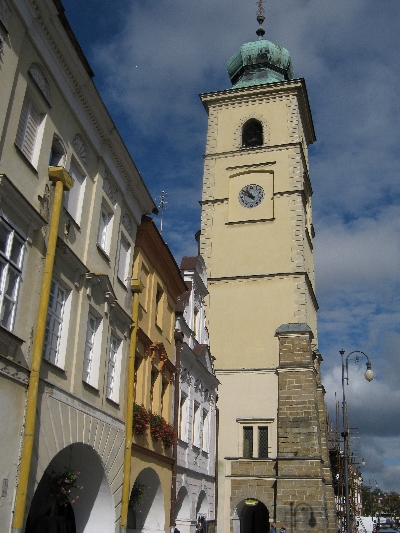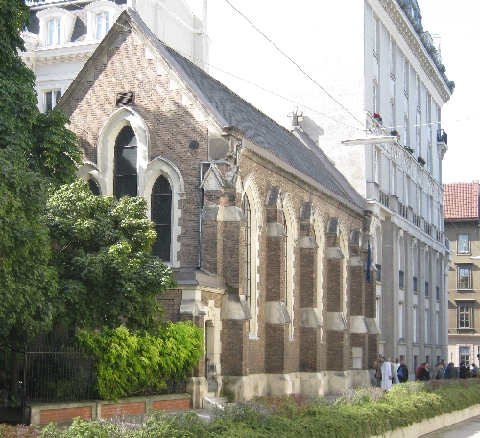
Yet again, I have to start a blog post by apologising for not posting anything here for the past three weeks. My chief excuse is that Sybille & I have been on away on holiday for two of those weeks only returning to Prague last Tuesday (12th) in the afternoon. We’ve spent our time exploring various parts of the Czech Republic with little forays into each of the country’s neighbours – Slovakia, Poland, Austria & Germany. Over the next couple of weeks, I hope to write a series of posts about our travels & introduce readers to the delights of the Czech Republic that lie outside of Prague.
On the evening of Tuesday 28th September, we met my former colleague Rev’d Kathy Ferguson, at Prague airport and brought her to the Chaplaincy flat. Then on the Wednesday morning, I took her on a quick tour of St. Clement’s Church & the Old Catholic’s Communio Centre so she was familiar with both places as she was to spend the next two weeks as my locum priest as well as taking care of Oscar!
Sybille & I left Prague on the afternoon of Wednesday 29th September and initially drove to the small town of Litomyšl which is about 180 km east of Prague. Here we stayed overnight with Steve & Paula, an American couple who had couchsurfed with us in Prague in late July this year & who Sybille also knew through Shutterstock where both she & Steve sell their photographs. Steve had created a wonderful homemade soup as well as a pear cobbler and we feasted on both as part of our evening meal.

The next morning, we set off to explore the architectural and other delights of Litomyšl. The historic centre is made up of a cobbled ‘square’, (effectively two isosceles triangles whose acute angles meet in the middle), which is surrounded by a series of arcaded buildings. One of the oldest, which dates from the 1640s, is known as ‘The Knight’s House’ and is an excellent preserved example of renaissance burgher housing.
 |
As well as its architecture, Litomyšl’s other claim to fame is being the birthplace of the composer Bedrich Smetana. His statue stands at the far end of the ‘square’ which in turn is named Smetanovo námestí after him.


Nearby is a high school building which is decorated with sgraffito, a form of decoration we were to see on many more buildings during our travels.

Also nearby is a 16th century chateau, to which additional baroque features have been added, again with sgraffito decoration . Since 1999 it has been part of Unesco’s World Heritage List and it is very easy to see why!


In the grounds of the chateau and in the nearby monastery garden are various figures, the work of the Czech sculptor Olbram Zoubek. The sculpture pictured here is one of four ladies surrounding a pool into which they are all about to dive.
A wonderful combination of friendly welcoming hosts, a delightful little town, together with pleasant sunny weather made this an excellent beginning to our October holiday in the Czech Republic.










